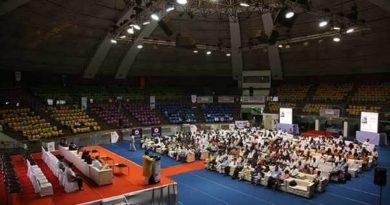Assam Government Will Vie For Branding, GI Tag For Assam Tea
ASSAM Government has constituted a high powered committee to recommend as to how promote the beverage at the global level by adding value and branding it. It will be headed by State‘s Additional Chief Secretary (Industry) Ravi Capoor who was also present at the meet with tea planter and corporate houses’ representatives. It will be mandated to pursue GI tag for Assam tea, Industry Minister Chandra Mohan Patowary said in Guwahati on August 25. The step is being taken at the backdrop of low price realisation for Assam Tea due to lack of branding. He was speaking to media persons after meeting representatives of the tea industry. Prices of tea have remained stagnant for the last several years while cost of production is increasing by 9 per cent annually. The per capita consumption of tea in the country is just around 780 grams. The people concerned are trying to finding a way out to deal with a huge surplus production of tea. The Industry Minister however did not elaborate on the decisions taken at the meet. Asked about whether the Tea Board failed to boost and popularise famed Assam tea, Patowary said: “It is no good to blame others. We will be working ourselves to promote tea as a preferred beverage among the masses,” he said.“We must admit the condition of the tea industry is not good. We have a surplus production of 80 million kg. Due to the mismatch in the supply and demand, there has been no price realization. We must identify the reasons why we have not been able to compete in the international market and increase sale of Assam tea,” Patowary said. The committee just formed will work s to add value to Assam tea. “At present, packers are benefiting by using their own brands to sell tea produced in the north-eastern state. The committee will look for means to develop a brand of Assam tea, along with a special logo. We will also be proposing for GI tag for Assam tea; we have GI registration for orthodox tea at present,” Patowary added. The committee will also look for ways to increase the demand for Assam tea as well as ensure that price realisation is better. The State produces around 650 million kg of tea annually, and 80 per cent of it is consumed in the country. Some 48 per cent of the production comes from small tea growers. The industry minister also pointed out that while the workers in Assam produce around 2.5 kg of tea per worker per season, the figure is 6 kg in South India. “We also have to look into this aspect. We are taking up the matter with the Skill Development Mission to see whether some skill development initiative for the workers is required,” Patowary said.
As per the Tea Board , Assam , part of north-eastern region of India, is the world’s largest tea-growing region on the might Brahmaputra River and bordering Bangladesh and Myanmar. Assam experiences high rainfall during the monsoon. The daytime temperature rises to about 36 °C creating greenhouse-like conditions of extreme humidity and heat. This tropical climate helps the growth of the Assam’s unique tea. Though Assam is noted for black teas, the region also produces smaller quantities of green and white teas with distinctive characteristics. It is claimed Assam remains the second commercial tea production region after southern China.The introduction of the Assam tea bush to Europe is related to Robert Bruce, a Scottish adventurer, who apparently encountered it in the year 1823. Bruce reportedly found the plant growing “wild” in Assam while trading in the region. Maniram Dewan directed him to the local Singpho chief Bessa Gam. Bruce noticed local tribesmen (the Singhpos) brewing tea from the leaves of the bush and arranged with the tribal chiefs to provide him with samples of the leaves and seeds, which he planned to have scientifically examined. Robert Bruce died shortly thereafter, without having seen the plant properly classified. It was not until the early 1830s that Robert’s brother, Charles, arranged for a few leaves from the Assam tea bush to be sent to the botanical gardens in Calcutta for proper examination. The plant was finally identified as a variety of tea, or Camellia sinensis var assamica, but different from the Chinese version (Camellia sinensis var. sinensis), says Wikipedia.




